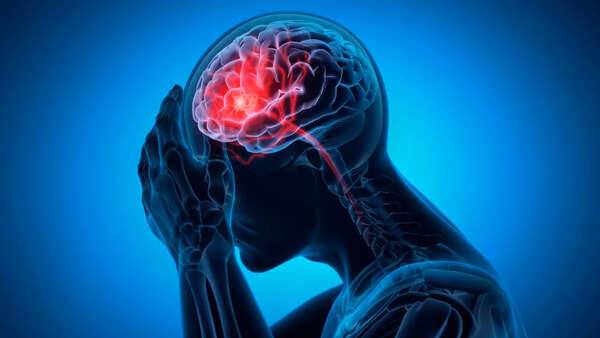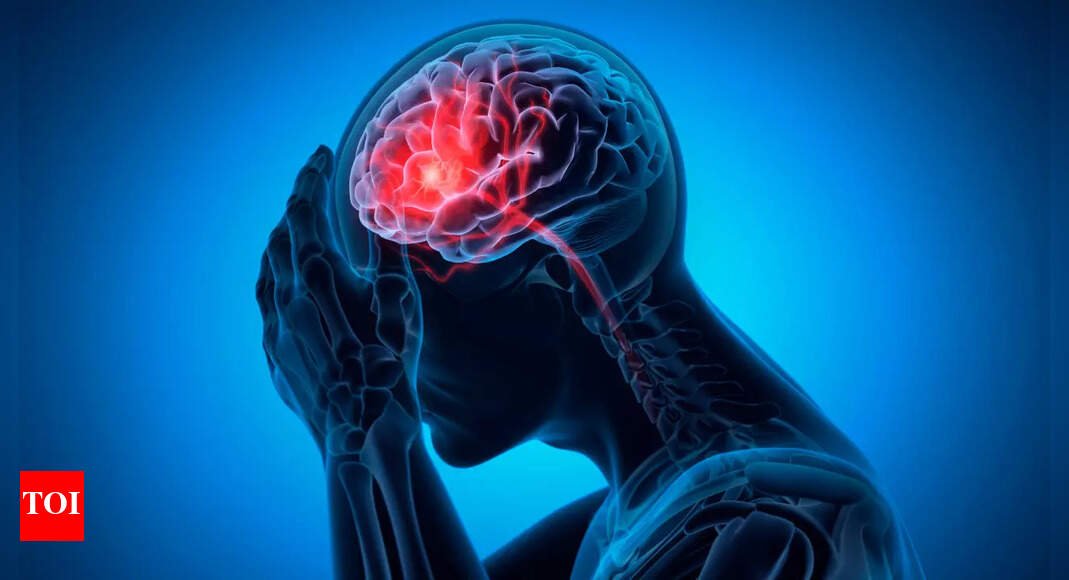Is criminal behaviour really linked to changes in the brain? Can changes in the brain really turn law-abiding citizens into criminals? Well, a groundbreaking study found that damage to a specific region of the brain may contribute to criminal or violent behaviour. A new study led by researchers at the University of Colorado Anschutz Medical Campus, Brigham and Women’s Hospital, and Harvard Medical School has found sheds light on the neural roots of violence and moral decision-making. The study is published in Molecular Psychiatry. Disruption in the brain pathway

To understand the link between brain injury and criminal behaviour, the researchers looked at brain scans of people who started committing crimes after sustaining brain injuries from strokes, tumors, or traumatic brain injury. They compared it with 17 cases to brain scans from 706 individuals with other neurological symptoms, such as memory loss or depression. What they found was striking. The researchers found that injury to a specific brain pathway on the right side, called the uncinate fasciculus, was common in people with criminal behaviour. This pattern was also seen in people who committed violent crimes.“This part of the brain, the uncinate fasciculus, is a white matter pathway that serves as a cable connecting regions that govern emotion and decision-making. When that connection is disrupted on the right side, a person’s ability to regulate emotions and make moral choices may be severely impaired,” Christopher M. Filley, MD, professor emeritus of neurology at the University of Colorado School of Medicine and one of the study’s co-authors, said in a statement. “While it is widely accepted that brain injury can lead to problems with memory or motor function, the role of the brain in guiding social behaviors like criminality is more controversial. It raises complex questions about culpability and free will,” Isaiah Kletenik, MD, assistant professor of neurology at Harvard Medical School and lead author of the study, said. What are the experts saying

Kletenik noted that while working in behavioral neurology training at the University of Colorado School of Medicine, he had the opportunity to evaluate patients who began committing acts of violence with the onset of brain tumors or degenerative diseases.“These clinical cases prompted my curiosity into the brain basis of moral decision-making and led me to learn new network-based neuroimaging techniques at the Center for Brain Circuit Therapeutics at Brigham and Women’s Hospital and Harvard Medical School,” Kletenik said. To further confirm the findings, the researchers conducted a full connectome analysis, using a detailed map of how brain regions are interconnected. The analysis showed that the right uncinate fasciculus was the neural pathway with the most consistent link to criminal behavior.“It wasn’t just any brain damage; it was damage in the location of this pathway. Our finding suggests that this specific connection may play a unique role in regulating behaviour,” Filley said.
The specific pathway connects the brain regions linked to reward-based decision-making with those that process emotions. However, when this link is damaged, particularly on the right side, it may lead to difficulty in controlling impulses, anticipating consequences, or feeling empathy, all of which can contribute to harmful or criminal actions.Not everyone with an injury turns violent

(Pic courtesy: iStock)
The researchers also found that not everyone with this type of brain injury becomes violent. However, the damage to this tract may play a role in the new onset of criminal behavior after injury. “This work could have real-world implications for both medicine and the law. Doctors may be able to better identify at-risk patients and offer effective early interventions. And courts might need to consider brain damage when evaluating criminal responsibility,” Filley added.Kletenik also noted that the findings of this study could raise crucial ethical questions. “Should brain injury factor into how we judge criminal behavior? Causality in science is not defined in the same way as culpability in the eyes of the law. Still, our findings provide useful data that can help inform this discussion and contribute to our growing knowledge about how social behavior is mediated by the brain,” Kletenik said.
var _mfq = window._mfq || [];
_mfq.push([“setVariable”, “toi_titan”, window.location.href]);
!(function(f, b, e, v, n, t, s) {
function loadFBEvents(isFBCampaignActive) {
if (!isFBCampaignActive) {
return;
}
(function(f, b, e, v, n, t, s) {
if (f.fbq) return;
n = f.fbq = function() {
n.callMethod ? n.callMethod(…arguments) : n.queue.push(arguments);
};
if (!f._fbq) f._fbq = n;
n.push = n;
n.loaded = !0;
n.version = ‘2.0’;
n.queue = [];
t = b.createElement(e);
t.async = !0;
t.defer = !0;
t.src = v;
s = b.getElementsByTagName(e)[0];
s.parentNode.insertBefore(t, s);
})(f, b, e, ‘https://connect.facebook.net/en_US/fbevents.js’, n, t, s);
fbq(‘init’, ‘593671331875494’);
fbq(‘track’, ‘PageView’);
};
function loadGtagEvents(isGoogleCampaignActive) {
if (!isGoogleCampaignActive) {
return;
}
var id = document.getElementById(‘toi-plus-google-campaign’);
if (id) {
return;
}
(function(f, b, e, v, n, t, s) {
t = b.createElement(e);
t.async = !0;
t.defer = !0;
t.src = v;
t.id = ‘toi-plus-google-campaign’;
s = b.getElementsByTagName(e)[0];
s.parentNode.insertBefore(t, s);
})(f, b, e, ‘https://www.googletagmanager.com/gtag/js?id=AW-877820074’, n, t, s);
};
function loadSurvicateJs(allowedSurvicateSections = []){
const section = window.location.pathname.split(‘/’)[1]
const isHomePageAllowed = window.location.pathname === ‘/’ && allowedSurvicateSections.includes(‘homepage’)
const ifAllowedOnAllPages = allowedSurvicateSections && allowedSurvicateSections.includes(‘all’);
if(allowedSurvicateSections.includes(section) || isHomePageAllowed || ifAllowedOnAllPages){
(function(w) {
function setAttributes() {
var prime_user_status = window.isPrime ? ‘paid’ : ‘free’ ;
var geoLocation = window?.geoinfo?.CountryCode ? window?.geoinfo?.CountryCode : ‘IN’ ;
w._sva.setVisitorTraits({
toi_user_subscription_status : prime_user_status,
toi_user_geolocation : geoLocation
});
}
if (w._sva && w._sva.setVisitorTraits) {
setAttributes();
} else {
w.addEventListener(“SurvicateReady”, setAttributes);
}
var s = document.createElement(‘script’);
s.src=”https://survey.survicate.com/workspaces/0be6ae9845d14a7c8ff08a7a00bd9b21/web_surveys.js”;
s.async = true;
var e = document.getElementsByTagName(‘script’)[0];
e.parentNode.insertBefore(s, e);
})(window);
}
}
window.TimesApps = window.TimesApps || {};
var TimesApps = window.TimesApps;
TimesApps.toiPlusEvents = function(config) {
var isConfigAvailable = “toiplus_site_settings” in f && “isFBCampaignActive” in f.toiplus_site_settings && “isGoogleCampaignActive” in f.toiplus_site_settings;
var isPrimeUser = window.isPrime;
var isPrimeUserLayout = window.isPrimeUserLayout;
if (isConfigAvailable && !isPrimeUser) {
loadGtagEvents(f.toiplus_site_settings.isGoogleCampaignActive);
loadFBEvents(f.toiplus_site_settings.isFBCampaignActive);
loadSurvicateJs(f.toiplus_site_settings.allowedSurvicateSections);
} else {
var JarvisUrl=”https://jarvis.indiatimes.com/v1/feeds/toi_plus/site_settings/643526e21443833f0c454615?db_env=published”;
window.getFromClient(JarvisUrl, function(config){
if (config) {
const allowedSectionSuricate = (isPrimeUserLayout) ? config?.allowedSurvicatePrimeSections : config?.allowedSurvicateSections
loadGtagEvents(config?.isGoogleCampaignActive);
loadFBEvents(config?.isFBCampaignActive);
loadSurvicateJs(allowedSectionSuricate);
}
})
}
};
})(
window,
document,
‘script’,
);
#link #brain #injury #criminal #behaviour



